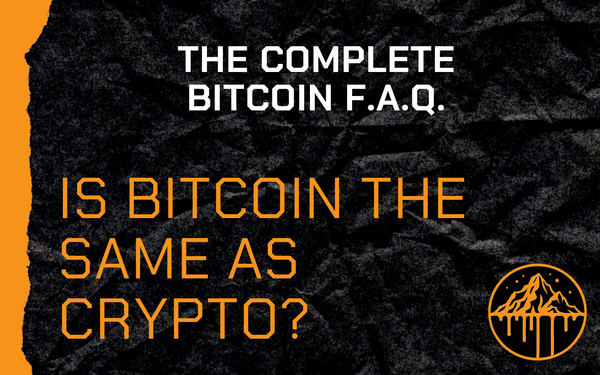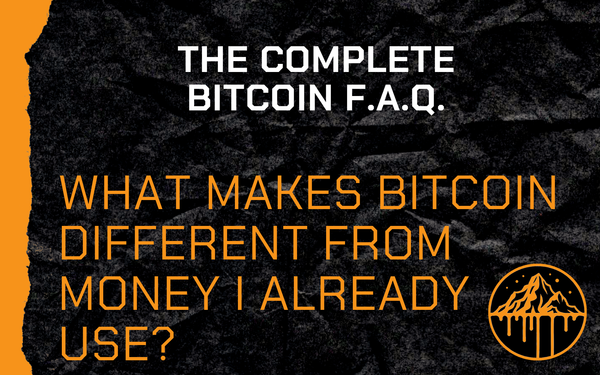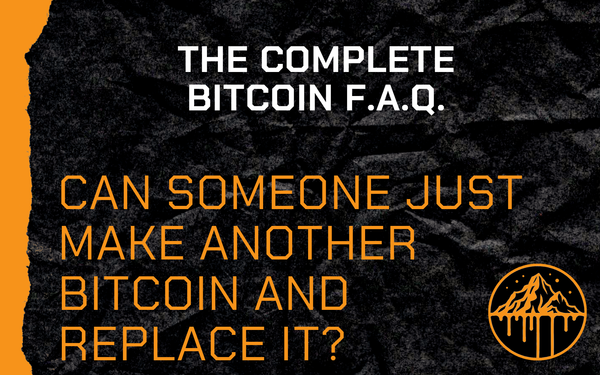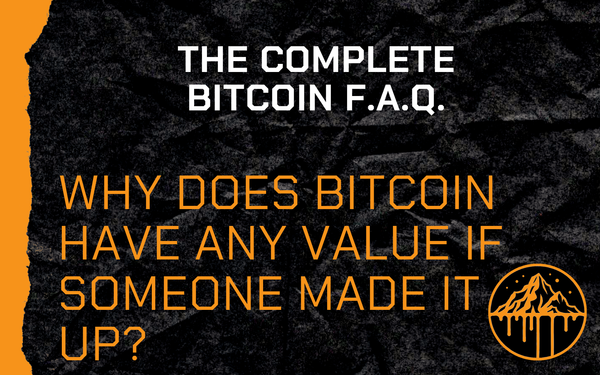Bitcoin Reads: Inflation Illusion (The Big Print by Lawrence Lepard)
If you ask the average person about inflation, they’ll likely tell you it’s just a fact of life. Prices go up. Money loses value. That’s how the economy works. But what if I told you that inflation isn’t a natural phenomenon—it’s a policy choice?
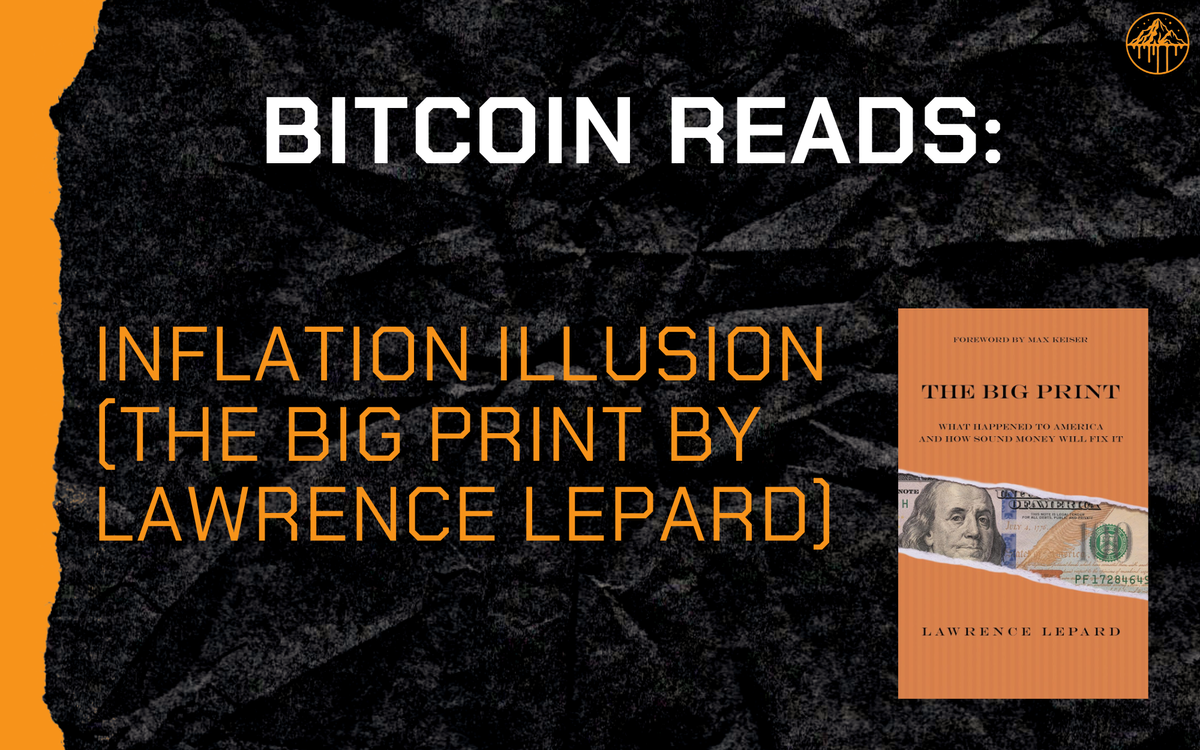
Bitcoin Reads is a deep-dive essay series that explores key financial books through the lens of Bitcoin and sound money. Each installment engages with a book’s core ideas, challenges mainstream economic narratives, and reveals hidden biases that keep people trapped in fiat thinking. By bridging these insights with Bitcoin’s principles, Bitcoin Reads helps readers see the financial system—and their own beliefs—more clearly.
Inflation Is a Lie—You’ve Just Never Known Anything Else
Inflation Feels Inevitable—But It Wasn’t Always This Way
If you ask the average person about inflation, they’ll likely tell you it’s just a fact of life. Prices go up. Money loses value. That’s how the economy works. But what if I told you that inflation isn’t a natural phenomenon—it’s a policy choice?
This is the reality that Lawrence Lepard exposes in The Big Print: What Happened To America And How Sound Money Will Fix It. He makes it clear: inflation is a function of monetary expansion, not an unavoidable law of nature.
“Most people alive today think that inflation is inevitable and just part of living in our modern world. They are wrong. It has not always been this way.”
The reason people accept inflation as normal is due to Normalcy Bias—the psychological tendency to believe that the future will resemble the past, even when overwhelming evidence suggests otherwise. If something has always been a certain way in our lifetime, we assume it must be the natural order of things.
But here’s the truth: inflation has only been the status quo since 1971, when the U.S. abandoned the gold standard. The same year I was born, so I’ve literally only known inflation. Before that, money held its value over time. Prices fluctuated due to supply and demand, but they didn’t perpetually rise the way they do now.
Yet today, people assume inflation is permanent, unavoidable, even beneficial. Why? Because they’ve never known anything else.
How the Brain Works: Normalcy Bias & The Inflation Illusion
Normalcy Bias explains why people ignore obvious signs of monetary decay. It’s why they continue to trust the dollar, despite overwhelming historical evidence that fiat currencies always fail.
What is Normalcy Bias?
It’s the tendency to downplay or ignore warning signs because we assume the world will function as it always has.We resist uncertainty, preferring to believe in stability—even when it’s a delusion.We are slow to react to slow-moving disasters, like inflation eroding wealth over decades.
The inflation illusion is so powerful that even when people see the price of gas, rent, and groceries skyrocket, they don’t question why it’s happening. Instead, they accept false explanations:
- “A little inflation is good for the economy.”
- “The Fed will control it.”
- “It’s just supply chain disruptions.”
My mom still waxes nostalgic about paying $23,000 for their first (and only) house in 1971. Or she’ll remind me that gasoline was $0.05 per gallon when she was learning to drive the streets of Pittsburgh. Yet not once has she ever questioned why things are “so expensive” now.
But as Lepard points out, the real cause is simple: money printing.
“Prices inflate because the money supply increases, and more monetary units chase the same number of goods and services.”
The biggest trick of modern economics is convincing people that inflation is complicated. It’s not. It’s just a tax—the most deceptive tax of all—one that people don’t notice until their purchasing power is already gone.
How Normalcy Bias Keeps You Stuck in a Broken System
The Federal Reserve and the U.S. government need Normalcy Bias to keep people trapped in fiat. If people recognized inflation for what it truly is, they would demand an alternative.
Before 1971, the U.S. had decades of stable prices. In fact, between 1800 and 1940, prices mean-reverted—they didn’t spiral out of control the way they do today. It wasn’t until Nixon severed the dollar’s tie to gold that inflation became permanent.
“World War II, however, led to a higher rate of inflation that did not mean revert. Then the inflation trend accelerated like a rocket northward after the U.S. abandoned the gold standard in 1971.”
Once inflation became the new normal, people adapted—but they adapted to being robbed.
Imagine if someone stole 2% of your bank balance every year. At first, you’d be outraged. But if it kept happening for decades, and everyone around you accepted it, you’d eventually stop fighting it. That’s exactly how inflation works.
Worse yet, at 2% a year you might not even notice it, which is by design.
The hidden tax that nobody questions
- Inflation allows the government to spend recklessly while shifting the cost onto the people.
- Savers are penalized—your dollars buy less every year.
- Debtors (especially governments) benefit—inflation reduces the real burden of what they owe.
The worst part? Inflation is not just theft—it’s deception. The government manipulates inflation statistics to make the problem seem smaller than it is.
If people understood the true rate of inflation, there would be outrage. Instead, they keep playing the game, never realizing the rules are rigged against them.
Bitcoin as the Exit from Normalcy Bias
What if money didn’t lose value over time?
The reason most people dismiss Bitcoin isn’t because they understand it—it’s because it challenges what they’ve always known.
The Bitcoin standard forces people to confront the uncomfortable reality that inflation isn’t necessary. But breaking free from Normalcy Bias is hard.
People resist Bitcoin for the same reason they accept inflation:
- It contradicts everything they’ve been taught.
- It feels unfamiliar, and humans prefer stability (even when it sucks).
- It requires independent thought, which most people avoid.
But here’s what Bitcoin offers:
- A fixed supply—unlike fiat, Bitcoin can’t be inflated away.
- Mathematically enforced scarcity—no central authority can manipulate it.
- A way to store value long-term—instead of watching it melt.
The key is realizing inflation isn’t the natural state of money. Gold held its value for centuries. Bitcoin restores that principle in a digital, decentralized way.
Bitcoin is sound money—not because the government says so, but because mathematics enforces it.
Final Thought: Will You Break Free?
Inflation wasn’t always the norm—it was engineered into your life. And if you’re my age or younger (Gen X), it’s all you’ve ever known.
If you never question it, you will always be trapped in a system that steals from you.
- Every fiat system in history has collapsed. If you assume this time is different, you’re ignoring history.
- Bitcoin is the exit—but only if you recognize the trap you’re in.
Normalcy Bias keeps you accepting inflation. Awareness gets you out. The choice is yours.
IMPORTANT: If you enjoyed this essay, make sure you grab Larry’s book, The Big Print: What Happened To America And How Sound Money Will Fix It. It’s fantastic!
Wealth melts. How much you got left?
Disclaimer: Melting Wealth is not financial advice. It’s a wake-up call. Think for yourself, question the system, and take responsibility for your decisions. Your money, your risk, your move.


